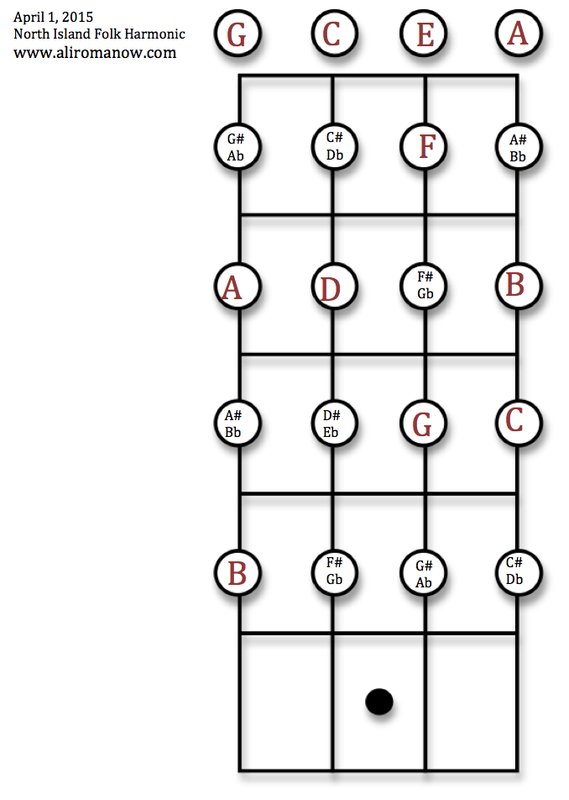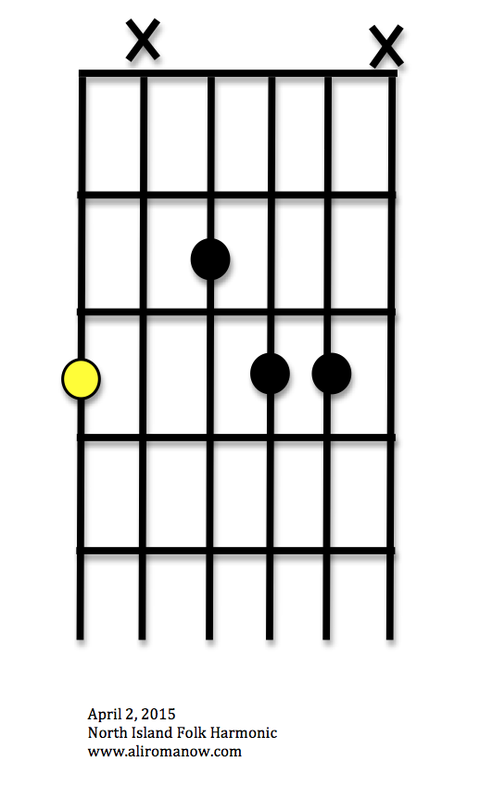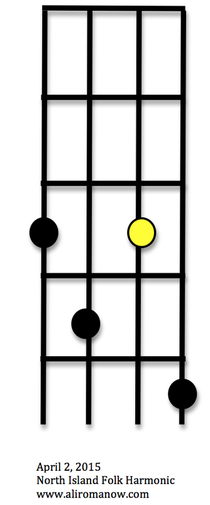|
Hi Folks! We've spent the last couple classes working through the final details of A Love Like Yours and diving into Swing 48,. Theres a lot going on in 48, probably more than 48 things to swing... So lets work through this one piece at a time. The most important thing in swing music is the Rhythm. As the song says: It don't mean a thing if it Ain't got that Swing. To get this rock steady frame work we need emphasize beats 2 & 4. 1 2 3 4 1 2 3 4 1 2 3 4 ... this is done with a combination of really snapping through the strings (on guitars and ukes) on that strum and by dampening the chord between strums with your left hand. For Fiddles and accordions we are going to put more emphasis on this second beat, by making it slightly longer, using more air or faster bow.
Use the Backing track above to work out some more foundation riffs and take a chance at improvising using a combination of different foundation riffs for each chord. If you want to get really fancy try playing 4 different Gm6 riffs, then 2 diff Cm6 ones...
cheers a
0 Comments
First of all I'd like to apologize for falling behind on the updates here on the Blogosphere. I'll do my best to make up for it with the next few posts, and several pieces of awesome news. First, my focus for the past month has been on finishing up the details on my first solo album ' The Flood' which should be released by June 1st 2015. IF you are interested in hearing what one of the tracks sounds like, you can listen to When A Train Rolls By on Soundcloud, you can also purchase the album through IndieGOGO. The second piece of news is that I will be remaining in the Comox Valley for at least another year. It was not an easy decision to make, but I feel like its the right one. Sooooo FolkHarmonic will be resuming in September after a summer break, with some breaks while I'm on tour, or we can work out a way to have classes continue while I'm on the road fall 2015/spring2016. The third is 2 last minute performances April 3rd (friday) - I will be the feature performer at the Qualicum Acoustic Cafe in Parksville April 19th (sunday) - I'll be joining Archie Pateman, Tammy Fassart and Anne Louise Genest at the Waverly Bluegrass brunch in Cumberland. All This Trouble - The FugitivesThe Harmonies were sounding wicked last night! Take a listen to the full arrangement mp3 and write out a roadmap from the recording, (what happens, where, anything you need to remember, any stops, extra harmonies etc). There are a couple times where the cord progression does something different than what is written on the lyrics sheet.
Extra(s) Trouble - fiddle chopsFor some reason the video is mirrored... I don't play left hand fiddle (I can play left handed but I sound like a 3 year old at their first lesson) But the content should get you started on Chopping anyways.... A Love Like Yours... 2 ways to get there (aka Double Roadmaps)Sometimes there is more info than can be easily conveyed in one road map. The whole idea of a roadmap is to help you keep track of where you are with a quick glance. If a song has both complicated vocal and instrumental arrangements I like to break them into 2 separate 'routes'. This way, depending on what I've blanked on in the arrangement I can glance down and quickly find the next turn.
Chromatic Scales, AKA Applicable Theory |
||||||||||||||||||||||||||||||||||||||||||||||||||||||||||||||||||||||||
If you play these chords exactly as shown in the pictures above you'll be playing a Gm6 (G-6) Chord. Now comes the trippy part, if you slide this shape up and down the neck the letter name will change, but it will always be a Minor 6 chord. Ex slide whole hand up so that yellow dot is on the 8th fret. you are now playing a Cm6 chord.
you can play the first 2 lines of Swing 48 without moving your hand from this shape.
Swing 48 - Django Django Django
If you're only gonna listen to one of these its this one you need: |
Some Youngsters being pretty darn talented. Check out the cool intro/lead in that these guys do. | ||||||||||||
Lift a Riff:
Good luck!
See you all next week
cheers
a
Ali Romanow
FolkHarmonic Director
(fók harmɑ́nɪk)
def: A group of people who want to do more than just jam on folk instruments. We’ll set up a groove and add easy parts, taught by ear and layered, to make epic sounds out of simple pieces. Immerse yourself in the world of harmonies, melodies, laughter and ensemble playing regardless of skill level.
Archives
May 2020
April 2020
March 2020
February 2020
January 2020
November 2019
October 2019
September 2019
May 2019
March 2019
February 2019
January 2019
October 2018
September 2018
May 2018
April 2018
March 2018
December 2017
November 2017
October 2017
September 2017
April 2017
March 2017
February 2017
January 2017
November 2016
October 2016
September 2016
April 2016
March 2016
February 2016
January 2016
December 2015
September 2015
August 2015
April 2015
March 2015
February 2015
January 2015
Categories
All
Brother Drop Dead
Calendar
Everything Is Free
Fiddle Chords
Girl In The War
Harmonies
Josh Ritter
NIFPA
Out Of Business
Road Maps
Shut Up And Drink Your Beer
Swing
Swing Chords
Western Swing
Ya Khotiv Bi







 RSS Feed
RSS Feed